What is the Science of Reading?
A comprehensive field of research that aims to understand how humans learn to read.
Introduction to the Science of Reading
Offering an interdisciplinary approach that draws upon principles and processes across linguistics, neuroscience, and education, the Science of Reading allow us to understand and implement the most effective methods for teaching and supporting reading development.
We know that there’s a literacy crisis:
-
65% of 4th graders scored below grade level in the area of reading
-
43 million adults read at a third-grade level.
-
Of the literate adults in the US, only 23% read a part of a book or a book in the last year.
For students in Special Education, acquiring these essential skills can be even more difficult. Phonics programs rooted in the Science of Reading allow learners with unique needs, reading disabilities, and learning differences to develop the ability to learn- and love- to read!

History of the Science of Reading
-
1970-80s
The "Whole Language" approach gained popularity in many education systems, emphasizing meaning and context in reading instruction. This approach led to debates about the best methods for teaching reading, pitting whole language against phonics-based instruction
-
2000s-2010s
Transformative digital era advances in cognitive neuroscience and brain imaging technology provided further insights into the neural processes involved in reading. Researchers began to explore the neurological basis of reading difficulties, including dyslexia.
-
2010-2020
There has been a growing consensus among educators, researchers, and policymakers regarding the importance of a balanced approach to reading instruction.
This approach combines systematic phonics instruction with new strategies that increase collaboration between researchers and educators, leading to the development of evidence-based reading programs and digital tools designed to support reading development.
During this time RoboKind's advanced facially-expressive technology was created, with the ability to engage learners at an unprecedented rate. These tools often incorporate adaptive learning techniques to cater to individual student needs.
-
2020-Today
Equity and Inclusion:
There is a growing emphasis on ensuring that all students, including those with diverse backgrounds and learning needs, have access to effective reading instruction.
For our students in special education, efforts have been made to address both the disparities in reading achievement and the need for better adoption of the key concepts associated with the Universal Design for Learning. The Science of Reading and evidence-based practices are driving improvement in reading instruction.
Systematic and Explicit Approach
Understanding Phonics
Researchers no longer debate whether phonics is essential, the findings are clear: phonics instruction is critical for students to learn to read.
Phonics refers to the relationship between letters and sounds. Phonological Awareness includes Phonemic Awareness, and refers to the ability to identify, count, and manipulate parts of a word. Phonemic Awareness refers to the ability to hear and manipulate individual sounds in a word.
Reading Researchers know that students need daily phonics instruction to learn to read. Students have better outcomes when learning to read when we use a systematic (sequential) and direct (explicit) approach.
Scarborough's Reading Rope
Scarborough’s Reading Rope visually represents the key components of reading. Skilled readers need language comprehension and word recognition. Phonics programs incorporate phonological awareness, decoding, and sight recognition to teach word recognition.
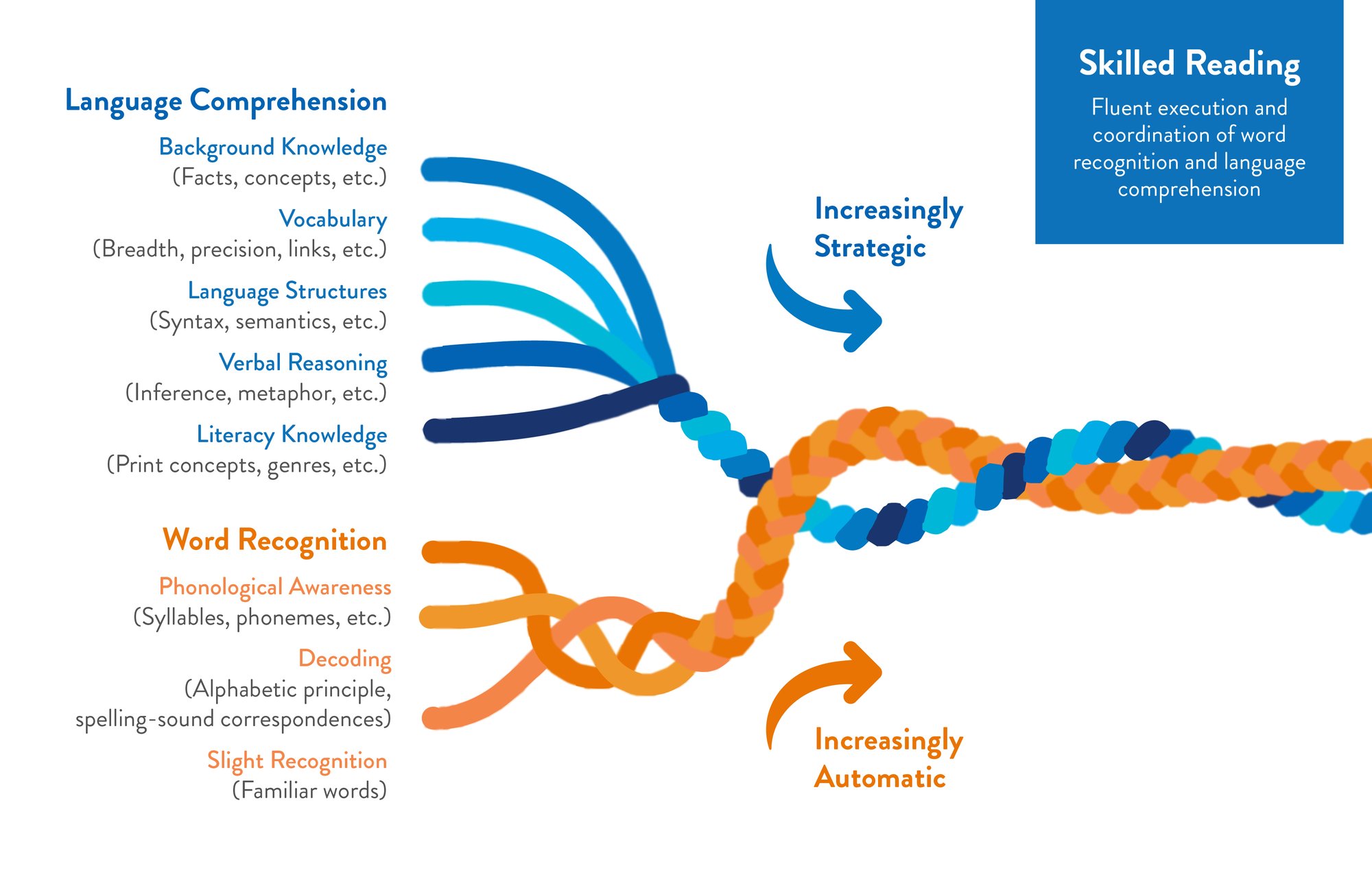
What is RoboKind Phonics?
Easily transfer the Science of Reading into practice!
RoboKind Phonics is a play-based, explicit, and systematic phonics program aligned with the Science of Reading. Our students celebrate exceptional outcomes because we use a sequential and direct instructional approach, combined with a Gradual Release of Responsibility Model, in 30-minute lessons, allowing students to learn in small segments.
Students will learn through Interactive Games, engaging and Innovative Technology (Avatars and Robots), and play-based, multi-sensory I-VAKT strategies that light up many parts of the brain.
Scope and Sequence
RoboKind Phonics sequential Scope and Sequence aligns with the research of LETRS and other bodies of work that dictate how we teach sounds and syllable types. The curriculum teaches sounds in the way that they are produced. Sounds are paired together if the mouth is used to make the sound similarly. Then, students are taught that the sound is voiced or unvoiced to distinguish the difference. The vowel valley is used to teach students the vowel sounds sequentially based on how the chin and mouth are formed to produce the different sounds. Each lesson is systematic and follows a Gradual Release of Responsibility model.
Unit 1 Focuses on Consonant Phonemes and the sequence is arranged by the manner of articulation (stops, windy stops (affricates), windy stops (fricatives), glides, liquids, and nasals.
Unit 2 Focuses on Vowel Phonemes, and the sequence is arranged by the position of articulation- front to back in the vocal cavity and high to low tongue position.
During lessons, students build on their Phonological Awareness skills by practicing phoneme isolation to identify the target sound in various words. As the lessons advance and skills develop, students practice with phoneme blending and practice decoding words with different syllable types to help increase the accuracy and speed of retrieval when reading. Content is progressively added to a digital sound wall that offers an image, audio, and x-ray video clip instructing students on how to produce the targeted sound.
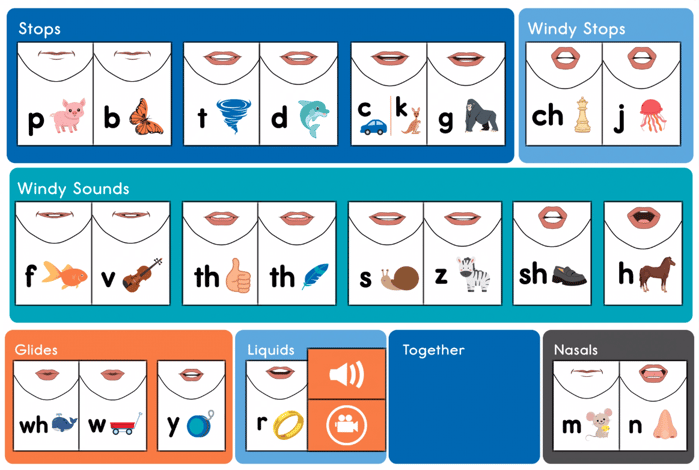 .
. 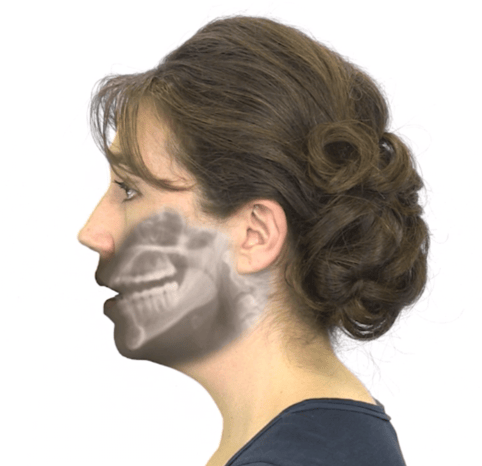

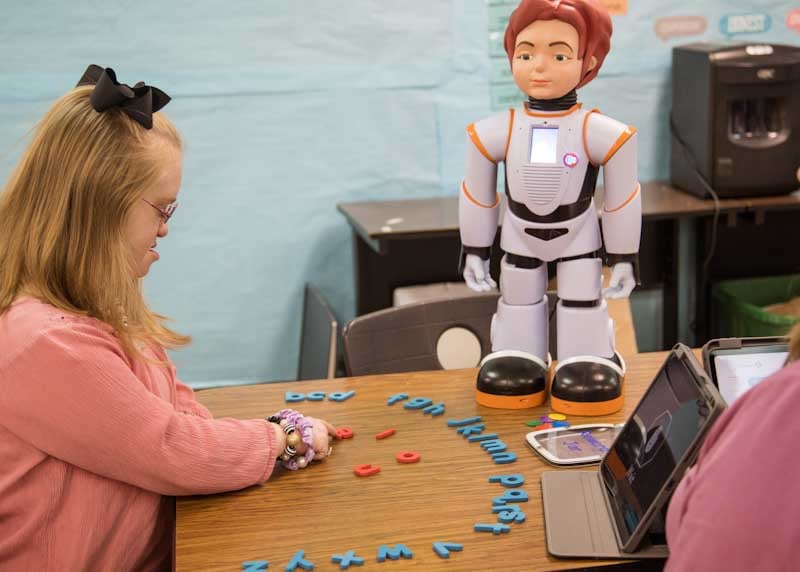
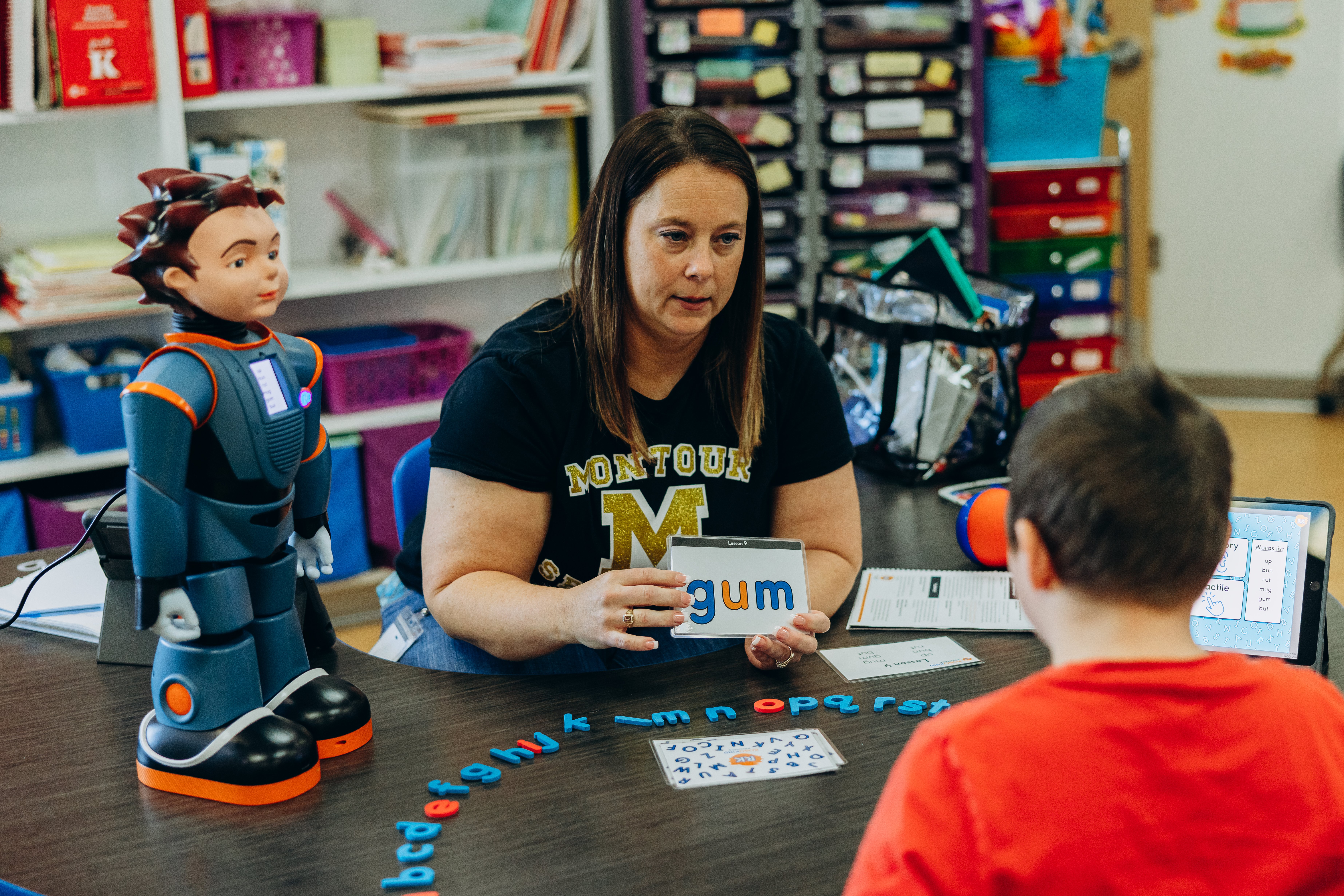
RoboKind Phonics implements explicit instruction in four ways.
Instructions are included in lesson plans for the educator to teach the student what key target concepts are directly.
The Virtual Avatar or Robot provides explicit instruction by showing a visual chest screen icon, and verbal reinforcement of what the student needs to know.
We provide an interactive sound wall that includes auditory examples, pictures of how to form the sound with your mouth, and X-ray videos.
We empower student choice with self-select multisensory-based learning centers in alignment with the critical components of the lessons, and are directly instructed about what they are learning during those activities.

Strategies to Light up the Brain!
Multi-sensory Interactive Technology, Visual, Auditory, Kinesthetic, and Tactile (I-VAKT) strategies allow your student to choose how they learn best.
RoboKind Phonics teaches with various learning modalities and multi-sensory input strategies. These strategies help light up the whole brain, including the Orthographic Mapping and Phonological Processing System necessary to read.
These multi-sensory strategies, in alignment with the Orton-Gillingham method, help students make more neural connections with different learning inputs and help foster the retention of skills. Students engage with multiple examples of video and sound clips to increase their opportunities to retain content.
Embedded Interactive Games
Interactive Games are woven throughout the curriculum, to enhance the learners engagement and experience to increase enjoyment. RoboKind Phonics uses guided, play-based, interactive games. Students continue to learn through play and promote student choice by selecting multi-sensory learning centers, using provided flashcards aligned with critical lesson components.
The Power of Repetition
The Science of Reading tells us that students need opportunities to have repetition of practice. RoboKind Phonics provides repetition through the lessons to help students develop automaticity with reading sight words. Automaticity is the ability to read quickly and accurately without conscious effort. Within lessons, students are exposed to repetition of practice with the letter and target sound at least 40 times. Research has demonstrated that students who are struggling need 14-40 repetitions. Students with dyslexia and learning disabilities need 40-200 repetitions.
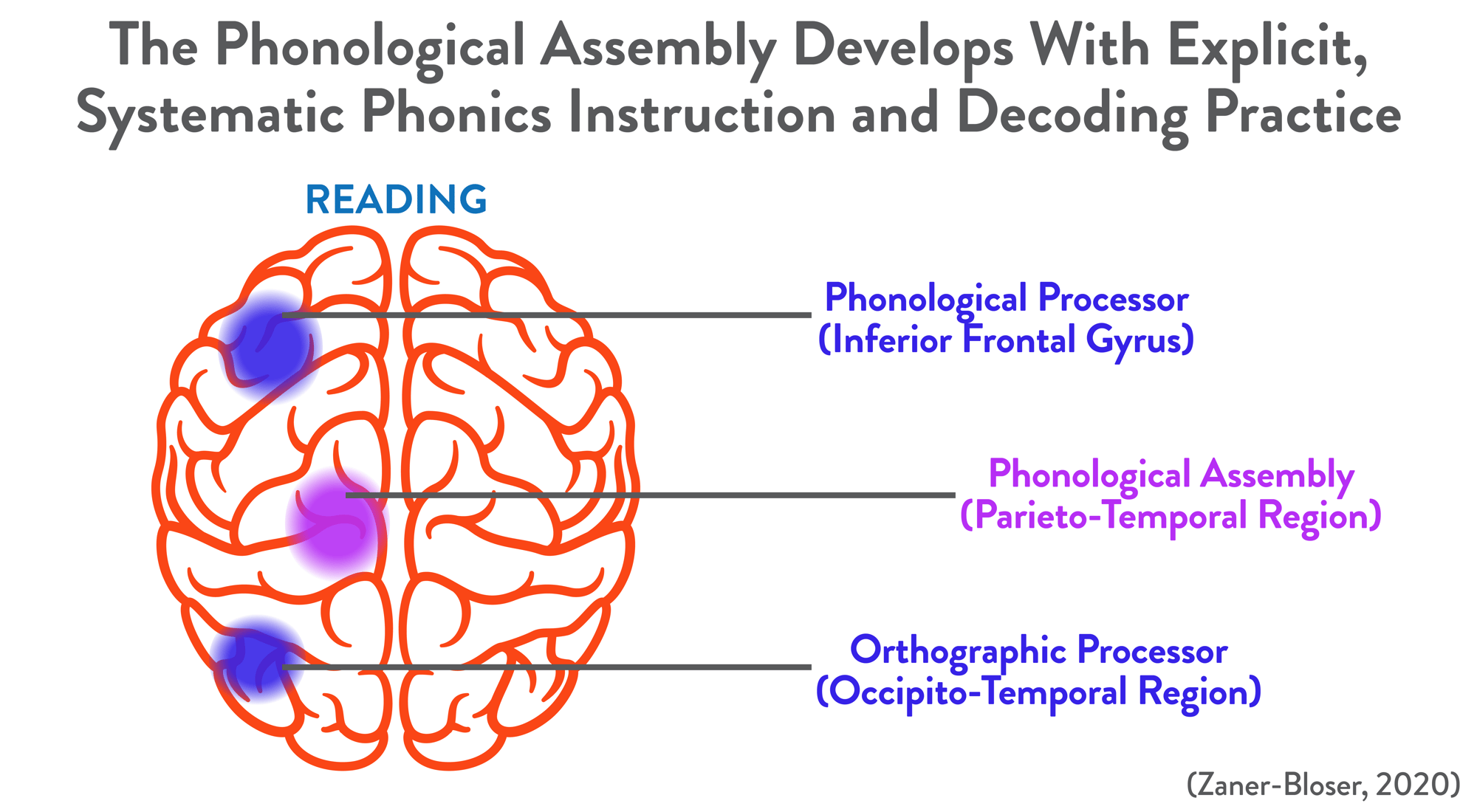
Phonemic and Phonological Awareness
RoboKind Phonics covers instruction in both areas of deficits identified for students with dyslexia by including education related to phonological naming and speed processing.
Brain scans from research studies have demonstrated the benefit of targeted instruction in having students practice decoding words and increase their performance and brain activity.
RoboKind Phonics uses the same decoding practice that showed gains for students struggling with reading. New neural pathways are created when students receive intensive, systematic instruction in phonics.
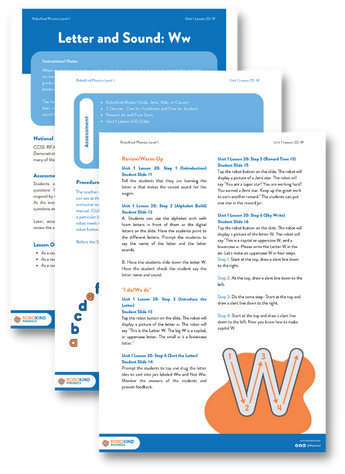
Standards, IEP, Objectives
Educators can easily align targeted IEP goals with their students program to facilitate lessons targetted at achieving those goals.
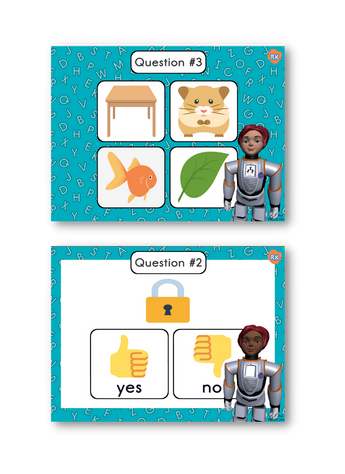
Formative Assessments
RoboKind Phonics has a pre-and post-assessment that aligns with DIBELS (Dynamic Indicators of Basic Early Literacy Skills), Letter Naming Fluency, Correct Letter Sounds, and Nonsense Word Fluency.
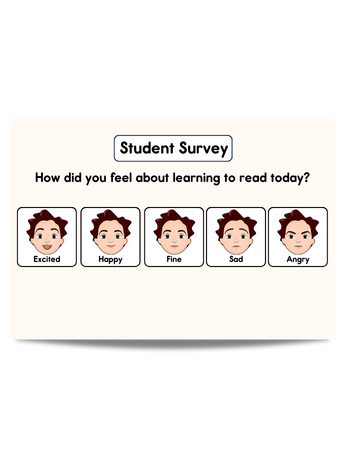
Attitude
Student attitude is assessed throughout the curriculum to track student enjoyment levels as proficiency increases.
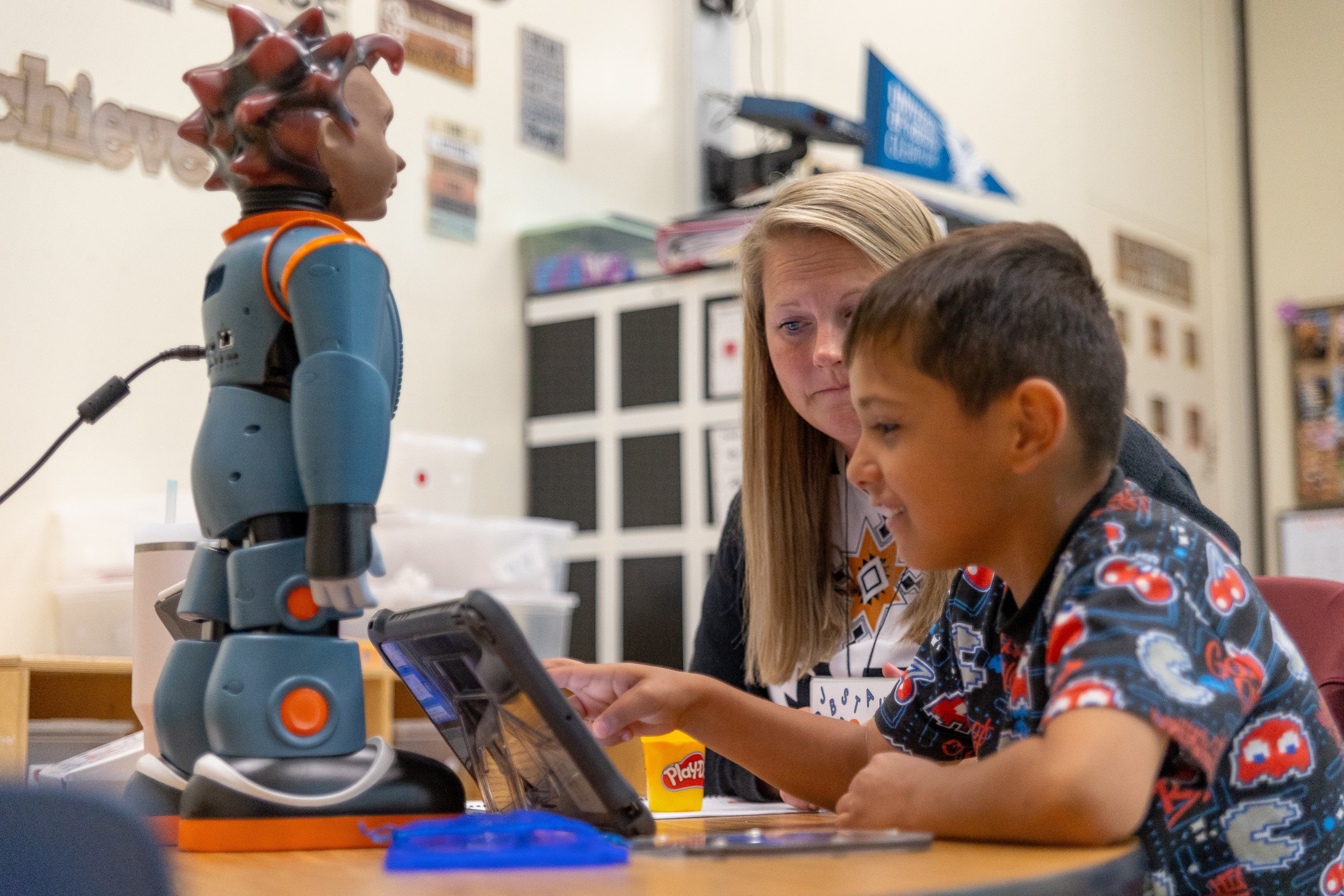
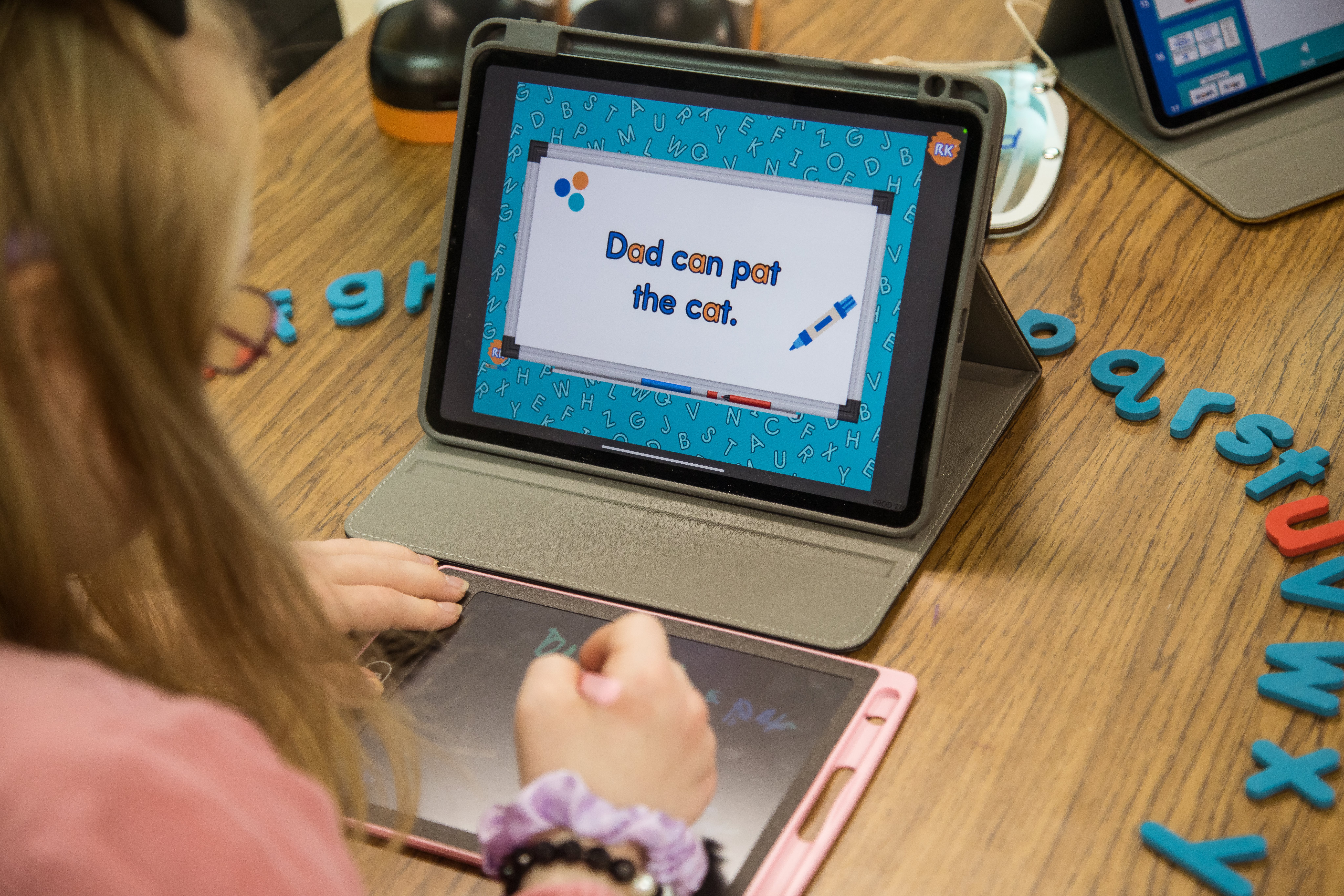
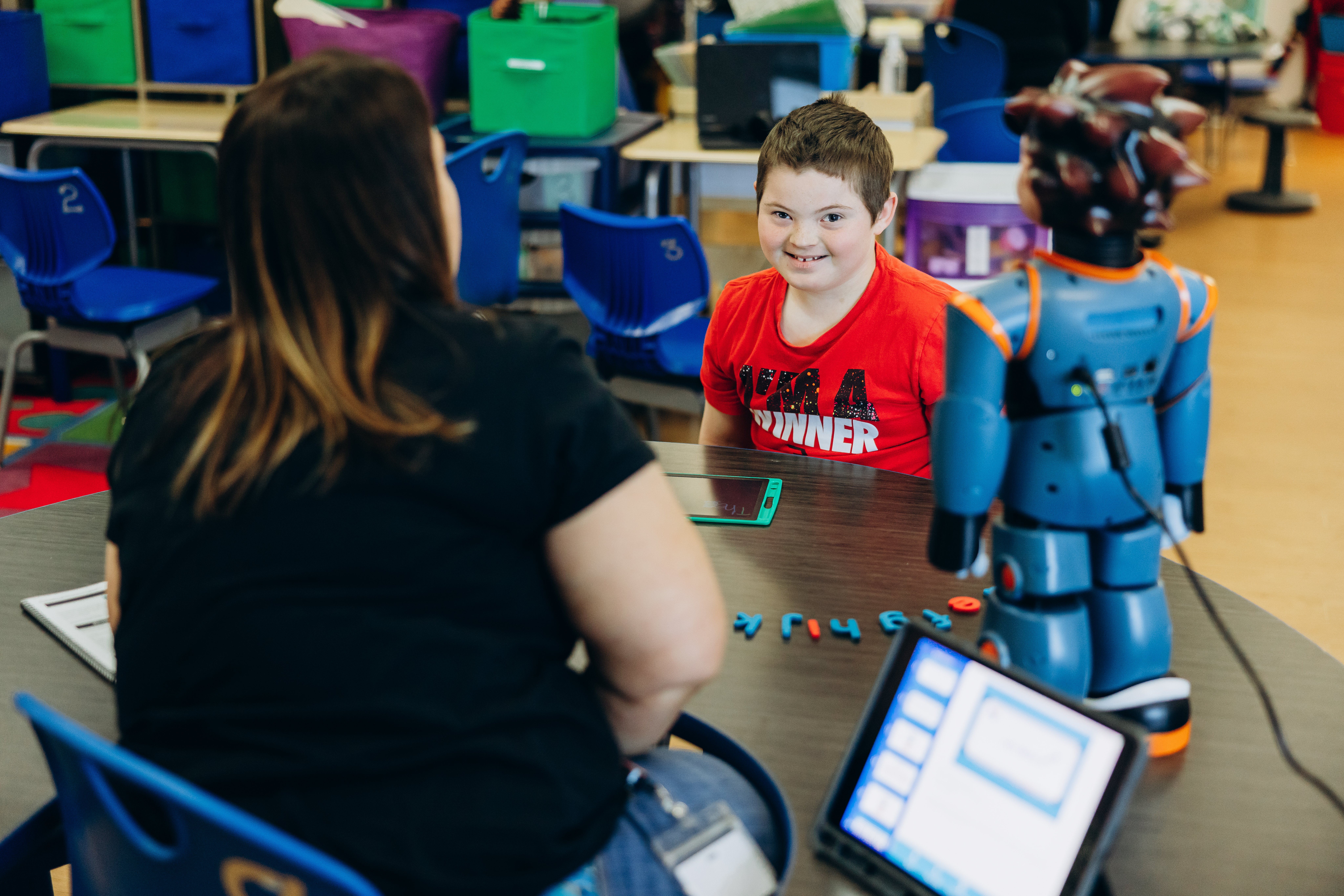
Our partners have stories to tell and impact to celebrate.
Watch Now
-
It's amazing. What our kids are learning with Milo and to see them transfer those skills to students or adults. I mean it's incredible.
Dr. Annie Spike
Deputy Superintendent of Marshall County Schools -
Milo doesn't replace our therapists. He's definitely a tool that they use, but Milo kind of helps to bridge that gap from the humanoid robot to the therapist.
Dr. Shayla Guidry Hilaire
Executive Director for Orleans Parish Public Schools -
Today, our 10 robots have been able to work with 55 students across 10 elementary schools, serving as a highly effective therapeutic solution and intervention.
Jessica McCracken
Special Education Case Manager at Philadelphia ISD -
The robots themselves are kind of rewarding, engaging, and intriguing. And, in just under a year of implementation, we’re seeing very successful results.
Greg Boerio
Executive Director at the Rich Center for Autism at YSU -
I have a student with severe behaviors, and just this past week he started telling us more things he would never express. Before he would bolt out (of) the room, yell, scream, hit us, and now he can express things that make a world of a difference.
Sheri Sumpter
Teacher at Montour Elementary School
.gif?width=335&height=251&name=RPReplay_Final1694543012-(2).gif)